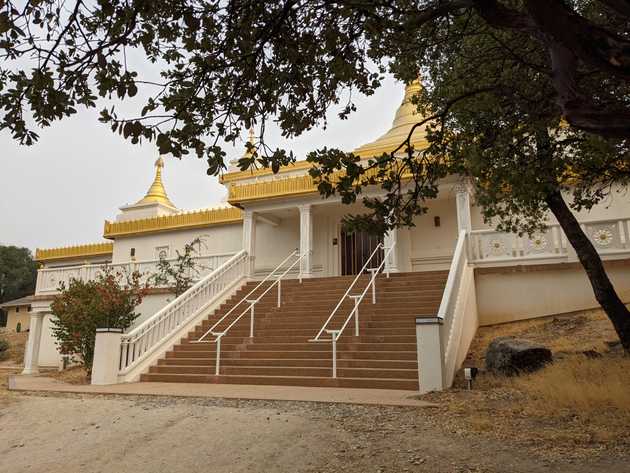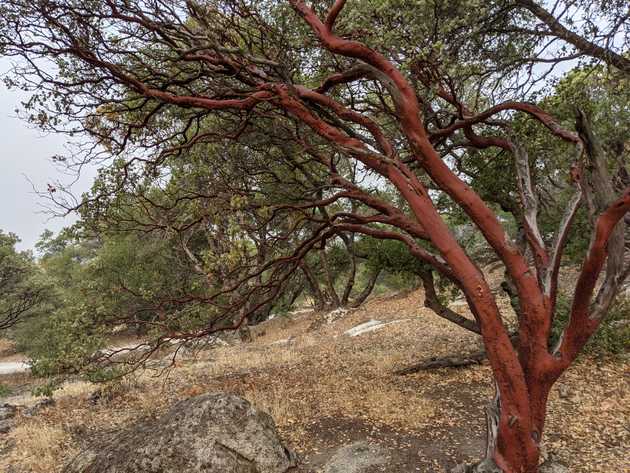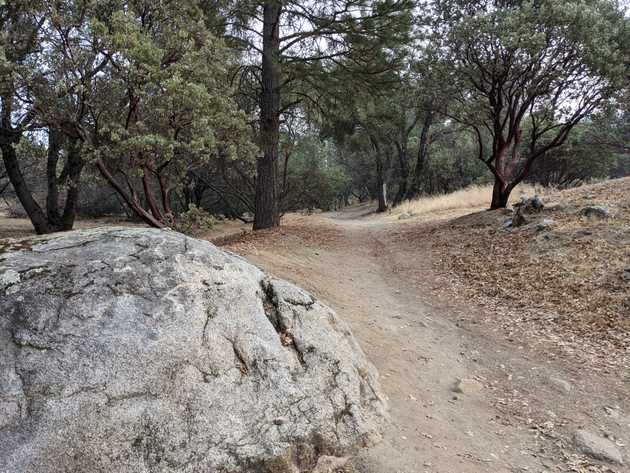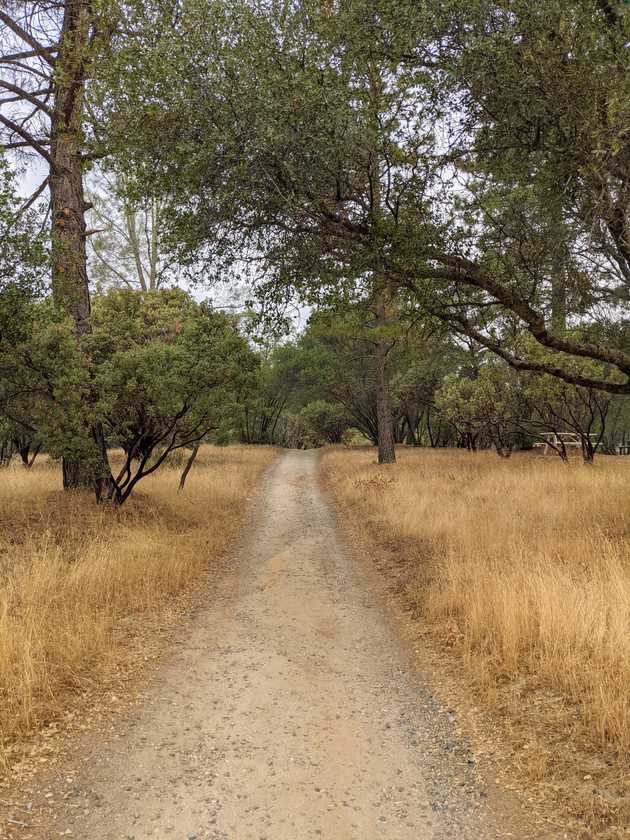I recently came back from a 10-day meditation trip called Vipassana [0].
It is a meditation technique to see things as they are, not as one wishes it should be, through the framework of the body. The technique was taught in India more than 2500 years ago. The course was led by SN Goenka through pre-recorded sessions as he is no longer alive.
What made me tick in the first place? When I read Steve Job's biography authored by Walter Isaacson, a quote stuck to me:
If you just sit and observe, you will see how restless your mind is. If you try to calm it, it only makes it worse, but over time it does calm, and when it does, there's room to hear more subtle things - that's when your intuition starts to blossom and you start to see things more clearly and be in the present more. Your mind just slows down, and you see a tremendous expanse in the moment. You see so much more than you could see before. It's a discipline; you have to practice it. — Steve Jobs
Before I go on about the trip, I want to clarify one more thing about what meditation is not. Meditation is an act of stillness. It is not a reflective exercise. In our contemporary culture, meditation is misunderstood. Lawrence Yeo clarifies the difference between meditation and reflection:
Meditation is not reflection. That may sound counter-intuitive, given that meditation is one of the more popular practices people use to still the mind. But that's because we need to properly define what we mean by "reflection," and how meditation is the antithesis of that. The key difference is this: Reflection is an active phenomenon, whereas meditation is inactive. Reflection is about asking questions, connecting thoughts, and studying your mind to recalibrate the path you're currently on. Meditation, on the other hand, is the art of doing nothing. It's to remove the pull of questions and the attachment to identity so your mind can finally be quiet. If you're meditating, then by definition, you shouldn't be reflecting. If you are, that means you're still being pulled by the waves of thought, identifying with the experiences that comprise your identity. Reflection depends on using thought as its primary tool, whereas with meditation, thought is the illusion you're piercing through. They are two wholly different things that are often mistaken for one another. — Lawrence Yeo
Now keeping those things in mind, I'll share my experience.
I didn't go to the course feeling miserable or due to any other personal life challenges. I simply wanted to push my mind and understand the teachings of Buddhism. The course was challenging enough to make me want to run away every single day. In the end, it was worth all the sweat and tears.
Being quite for 10 days, I saw how distorted my mind was. My mind was always making assumptions of others even the surrounding students who I had never spoken to. The mind is always racing to make up some stories about the world around us. This creates wrong perception ultimately leading to judgement and negativity. Initially, it was hard to turn my monkey mind off. But I emerged from the course much calmer and less anxious. In the end, I endured both physical and mental pain. I understood the value of stabilizing the mind.
Course structure and requirements
- The session starts at 4:30am and ends at 9:00pm for 10 days.
- No dinner is provided, but fruits are available for the first time students. Second time students do not eat anything.
- Nobel Silence is practiced through out the course. This means silence of speech, body and mind.
- You can't go past the course boundaries. It is prohibited through out the course.
- You can't read or journal. Or a matter of fact engage in any sort of activity including physical exercise. Walking is the only form of physical exercise allowed.
- There are 3 daily mandatory hourly sessions called adhiṭṭhāna [1] where everyone on the facility including servers, volunteers, management, teachers and students meditate together. During this time strong self-discipline is required where you try not to move whatsoever, eyes closed at all times and sit with a straight back and neck.
- In the course you practice the threefold training—right discipline (sīla), concentration (samādhi) and wisdom (paññā).
- The first initial days are to focus on sīla [2], proper morality by following the 5 precepts of no—killing, stealing, lying, sexual activity and intoxicants.
- There are 3 meditation techniques taught during the course—natural observation of inhalation and exhalation of breath (ānāpāna), full body scan (vipassana) and meditation of loving-kindness by sharing your harmony with others (mettā bhāvanā).
- The course is entirely free of charge which includes meal and lodging. It is encouraged to volunteer over monetary donation. It operates on the pay-it-forward model. Someone paid for my course and it was my obligation to pay for the next person in any way or form. This is a collective effort of taking one person at a time out of misery.
- Every evening there is an hour long Dharma discourse (lecture) [3] which is pre-recorded by SN Goenka explaining the theory and benefits of these techniques.
Main takeaways
- Vipassana teaches one how to die as it teaches one how to truly live. This is called the art of living and dying [4].
- You are responsible to open your own door. Nobody can walk the path for you and nobody can open the door for you. This is true in all aspects of life.
- There are 2 types of miseries:
- Craving → Clinging → Attachment → Misery
- Aversion → Avoidance → Attachment → Misery
- Finding happiness is not the reason to meditate. To remain stable (equanimous) is the ultimate goal. Remaining stable to external situations is the happier result.
- Wisdom is not learning new things, it is coming to understand, through experience, universal truths at deeper levels. There is a huge difference between intellectual wisdom versus actual wisdom. You can't reach the ultimate truth through intellectual wisdom, but you can seek the truth through action. Seeking objective truth over playing intellectual wisdom should always be prioritized.
- Everything is impermanent (anattā) [5].
- By simply observing your bodily sensations and thoughts without judgement or reaction, you will retain the stability of your mind and undo your old habit patterns and find blind spots. By observing your bodily sensations and thoughts, you will stop reacting to them. Once you understand the changing nature of your bodily sensations, you will understand the universal laws which is the universal truth of impermanence, suffering and miseries. Once you understand the universal truth, you begin the path towards liberation from suffering miseries.
- Staying equanimous for long period of time allows old saṅkhāras [6] to surface up. These are 5 deeply rooted formations which includes craving, aversion, drowsiness, hesitation and doubt. Once they arise on the surface, you simply observe them instead of reacting to them. This allows saṅkhāras to weaken and eventually disappear. By not fueling your saṅkhāras, they gradually burn out.
- Being equanimous and aware—are both equally important to practice the technique of non-emotional observation.
- Speed creates illusion.
- I am not the body. I am not the mind. I am not the emotion. In fact, “I” is an illusion.
- 10 days is a tiny fraction of the long path. You barely scratch the surface if you practiced the techniques seriously. It is a lifelong journey.
- Anger is universal. There is no brown, black or white anger. Therefore, the course is non-secular, non-judgmental and non-reactive.
Personal experience
First couple days were super hard due to physical pain. I could not sit straight and legs were in constant pain. The mind kept doing everything but willing to meditate. I wanted to run away. I also kept questioning my decision and doubting the course.
The Dharma discourses (lectures) in the evening were very inspiring. However, it was reminded during the discourse that I am not here for intellectual entertainment but rather here to understand the theory and benefits so I can practice well. I always felt motivated after these sessions.
You focus on your natural breath. No mantras. No deep or hard breaths. Only natural breaths. The area you focus on is around the nose, nostrils and upper lip. This meditation technique is called ānāpāna (natural observation of inhalation and exhalation of breath). However, hard breaths are allowed for new students if there is any trouble focusing your mind. As the days go by, you focus further on the outer part of the nostrils. This technique makes the mind calmer and sharper by narrowing down the focus of observation. It requires at least 3 days to observe the subtle sensations around the nose. Without mastering or understanding ānāpāna, you cannot practice the next steps.
Then you move on to practicing Vipassana. Vipassana allows you to objectively experience bodily sensations, not wanting or wishing for any particular feelings. One’s mental base or volition is really important. As time progressed, I was getting better at subtlety, mental stillness and discipline. I was able to get more into the state of flow, maintain my body posture and prevent my mind from wandering for a longer duration of time.
By day 6, my saṅkhāras (deep rooted issues) started to surface up which made me agitated. I was hesitant to speak to my teacher, but I ultimately signed up for a consultation. My teacher confirmed that my old saṅkhāras were surfacing up which was a natural process of Vipassana. He asked me to observe and not react to them. By next day (day 7), I was able to get back into the flow and non-judgmental observation for a longer period of time.
I cruised through evenings and mornings, but I was challenged during the afternoons (right after lunch). By the way, since dinner is not provided, do not try to fill the void of eating more during lunch. An old student gave me this tip which I stuck with since Day 1. I am sure my afternoons would've been much more miserable otherwise. During those afternoons, I was very impatient, negative and wanting the retreat to be over. Nowhere to go, nowhere to hide due to course boundaries. I forced myself to meditate but the sessions during this time of the day were not my best. I was mentally and physically drained. But this is what self-discipline training feels like.
Day 10 was the Metta Day (mettā-bhāvanā). The meditation of loving-kindness by sharing the positive energy with others. In the end, I paused for a second and looked around. I was in awe. There were 100 plus people spreading love and kindness. What an environment to be in. When the Noble Silence was broken on Day 10, you can feel the energy and joy of liberation. It was such a beautiful moment. But when everyone started speaking it was very loud. I wanted to go back into a quieter environment.
Vipassana meditation has given me an internal lens to observe the inner-self in a non-judgmental way. Being more aware and staying equanimous makes your mind resilient and sharper.
Art of living
Mr. S.N. Goenka explains the purpose of why you should strive to live artfully during his speech in Berne, Switzerland. I recommend to read the entire speech published on the official Dhamma website [4].
Everyone seeks peace and harmony, because this is what we lack in our lives. From time to time we all experience agitation, irritation, disharmony. And when we suffer from these miseries, we don't keep them to ourselves; we often distribute them to others as well. Unhappiness permeates the atmosphere around someone who is miserable, and those who come in contact with such a person also become affected. Certainly this is not a skillful way to live.
We ought to live at peace with ourselves, and at peace with others. After all, human beings are social beings, having to live in society and deal with each other. But how are we to live peacefully? How are we to remain harmonious within, and maintain peace and harmony around us, so that others can also live peacefully and harmoniously?
In order to be relieved of our misery, we have to know the basic reason for it, the cause of the suffering. If we investigate the problem, it becomes clear that whenever we start generating any negativity or impurity in the mind, we are bound to become unhappy. A negativity in the mind, a mental defilement or impurity, cannot coexist with peace and harmony.
Now, one way to solve this problem is to arrange that nothing unwanted happens in life, that everything keeps on happening exactly as we desire. Either we must develop the power, or somebody else who will come to our aid must have the power, to see that unwanted things do not happen and that everything we want happens. But this is impossible. There is no one in the world whose desires are always fulfilled, in whose life everything happens according to his or her wishes, without anything unwanted happening. Things constantly occur that are contrary to our desires and wishes. So the question arises: how can we stop reacting blindly when confronted with things that we don't like? How can we stop creating tension and remain peaceful and harmonious?
In India, as well as in other countries, wise saintly persons of the past studied this problem—the problem of human suffering—and found a solution: if something unwanted happens and you start to react by generating anger, fear or any negativity, then, as soon as possible, you should divert your attention to something else. For example, get up, take a glass of water, start drinking—your anger won't multiply; on the other hand, it'll begin to subside. Or start counting: one, two, three, four. Or start repeating a word, or a phrase, or some mantra, perhaps the name of a god or saintly person towards whom you have devotion; the mind is diverted, and to some extent you'll be free of the negativity, free of the anger.
This solution was helpful; it worked. It still works. Responding like this, the mind feels free from agitation. However, the solution works only at the conscious level. In fact, by diverting the attention you push the negativity deep into the unconscious, and there you continue to generate and multiply the same defilement. On the surface there is a layer of peace and harmony, but in the depths of the mind there is a sleeping volcano of suppressed negativity which sooner or later may erupt in a violent explosion.
Other explorers of inner truth went still further in their search and, by experiencing the reality of mind and matter within themselves, recognized that diverting the attention is only running away from the problem. Escape is no solution; you have to face the problem. Whenever negativity arises in the mind, just observe it, face it. As soon as you start to observe a mental impurity, it begins to lose its strength and slowly withers away.
A good solution; it avoids both extremes—suppression and expression. Burying the negativity in the unconscious will not eradicate it, and allowing it to manifest as unwholesome physical or vocal actions will only create more problems. But if you just observe, then the defilement passes away and you are free of it.
...
It can be practiced by one and all. Everyone faces the problem of suffering. It is a universal malady which requires a universal remedy, not a sectarian one. When one suffers from anger, it's not Buddhist anger, Hindu anger, or Christian anger. Anger is anger. When one becomes agitated as a result of this anger, this agitation is not Christian, or Jewish, or Muslim. The malady is universal. The remedy must also be universal.
Vipassana is such a remedy. No one will object to a code of living which respects the peace and harmony of others. No one will object to developing control over the mind. No one will object to developing insight into one's own nature, by which it is possible to free the mind of negativities. Vipassana is a universal path.
Observing reality as it is by observing the truth inside—this is knowing oneself directly and experientially. As one practices, one keeps freeing oneself from the misery of mental impurities. From the gross, external, apparent truth, one penetrates to the ultimate truth of mind and matter. Then one transcends that, and experiences a truth which is beyond mind and matter, beyond time and space, beyond the conditioned field of relativity: the truth of total liberation from all defilements, all impurities, all suffering. Whatever name one gives this ultimate truth is irrelevant; it is the final goal of everyone.
California Vipassana Center (North Fork)
All pictures below were taken by my friend Victor Tse who was generous enough to give me a ride to and from the center. I also learned so much from him during my ride about his experiences. I earned a new friendship along with calmness. The center is located in North Fork in California.





Further reading
References
- [0] Dhamma Org
- [1] Adhiṭṭhāna
- [2] Sīla
- [3] Dharma Discourses
- [4] Art of Living
- [5] Anattā
- [6] Saṅkhāra